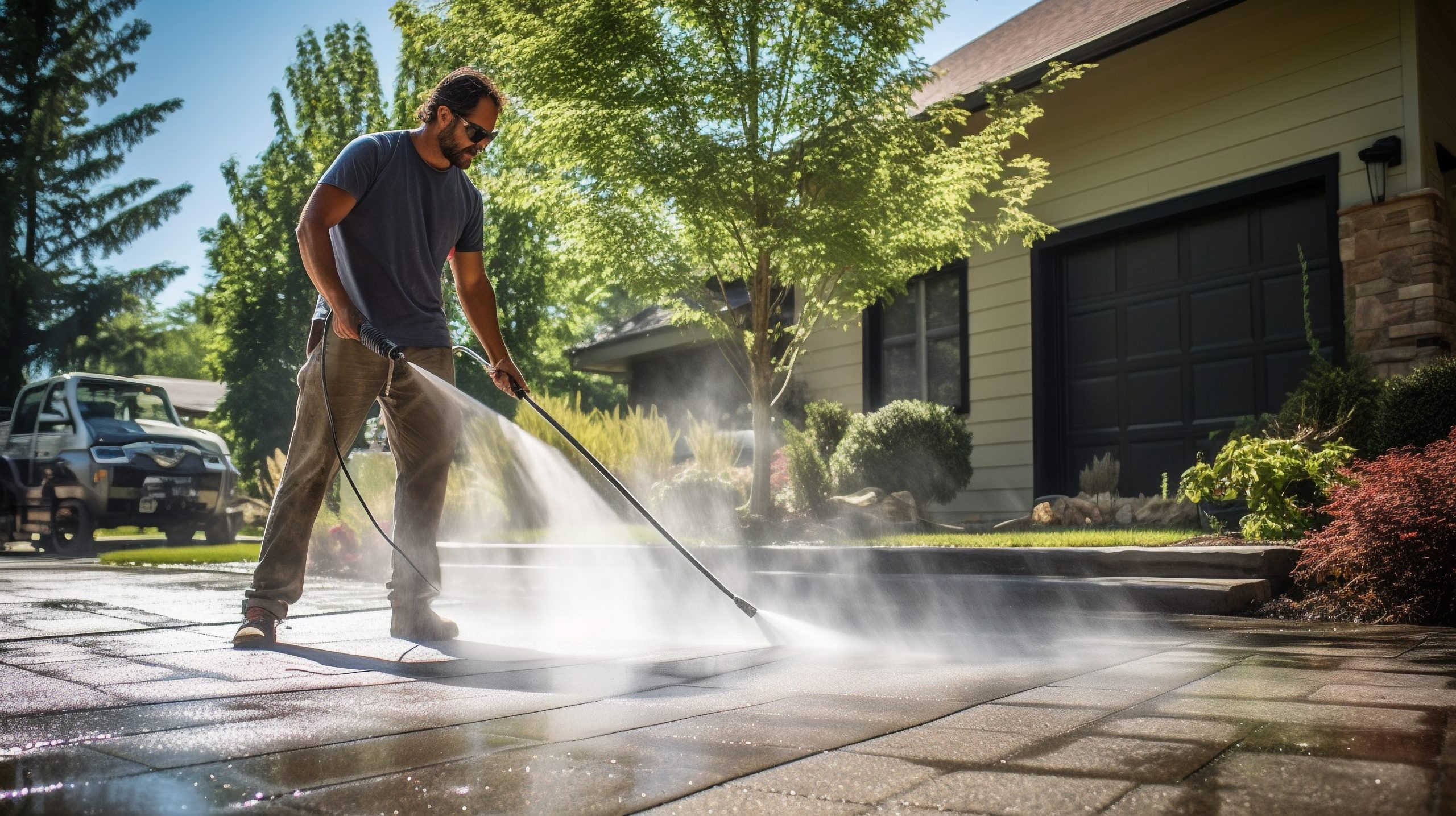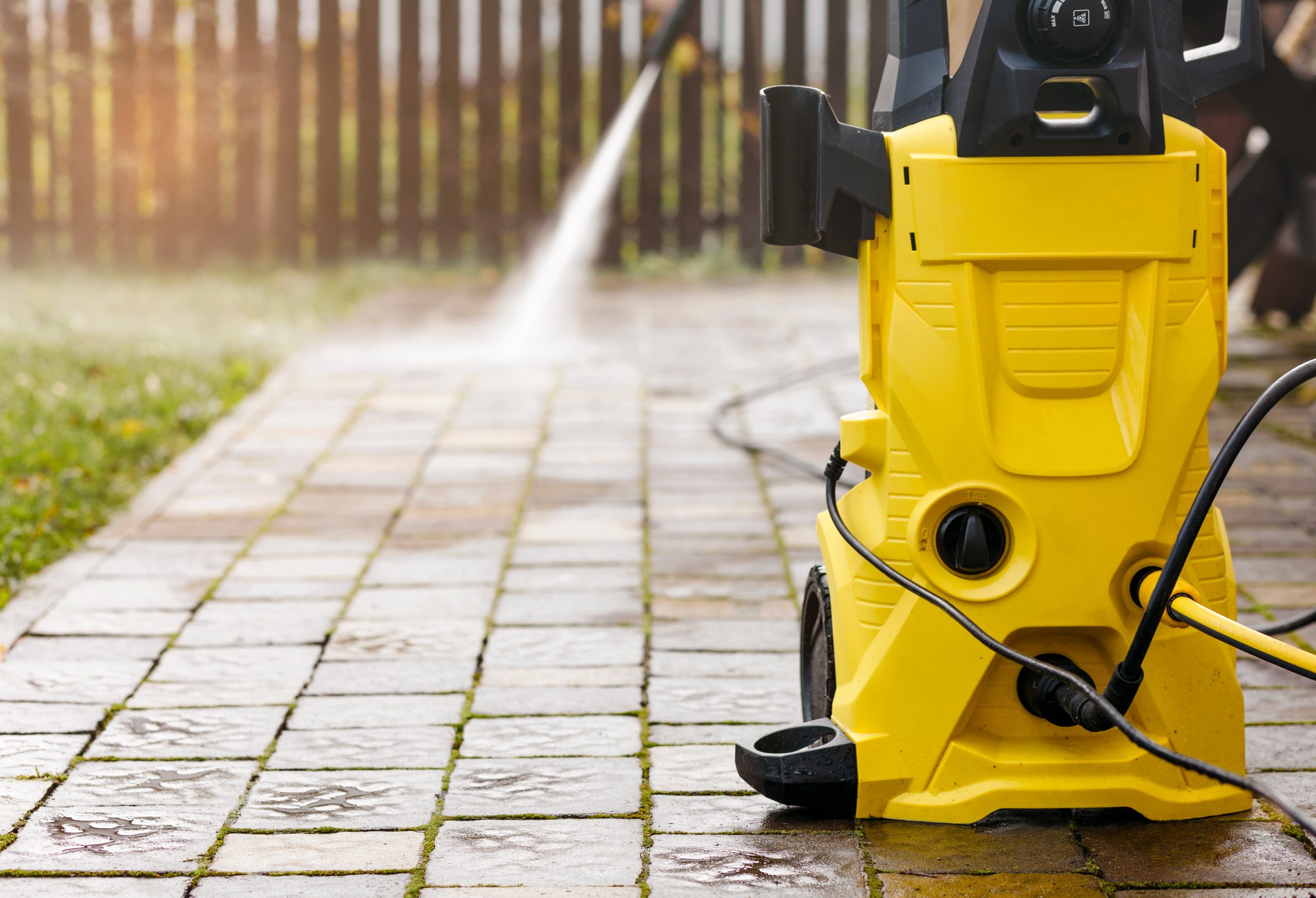Pressure washing is an extensively used powerful cleaning method for residential and commercial properties. This method involves the use of high-pressure to remove particles and substances, such as dirt, dust, loose paint, mold, grime, and mud, from surfaces and objects such as buildings, vehicles, and concrete surfaces. However, as effective as it is, pressure washing poses certain risks to the operator and the property if not done correctly.

This comprehensive guide provides essential safety tips for pressure washing, ensuring protection for individuals and their properties.
1. Choose The Right Pressure Washing Service
Selecting the right pressure washing service ensures your property is cleaned effectively and safely. They typically offer professional, reliable, meticulously detailed services catering to various cleaning needs.
Whether for residential or commercial properties, providers, such as Diamond Pro Wash in Greensboro NC, or those in similar locations employ a team of skilled professionals who understand the intricacies of pressure washing. They assess the surface type and choose the appropriate pressure level and cleaning solution, ensuring your property is cleaned and protected from potential damage.
Overall, their commitment to quality and customer satisfaction makes them an ideal choice for those seeking thorough and safe pressure washing services.
2. Wear Protective Gear
Always wear appropriate protective gear before operating a pressure washer. This includes the following:
- Safety Glasses or Goggles: Protect your eyes from harmful debris with safety glasses or goggles.
- Ear Protection: The machine can be loud and potentially damage your hearing.
- Waterproof Clothing: Wear clothes that can withstand high-pressure water.
- Gloves: Protect your hands from high-pressure water and detergents by wearing gloves.
- Closed Shoes: Wear preferably steel-toed boots for foot protection.
By wearing the aforementioned protective gear, you can navigate the pressure washer more effectively and safely.
3. Be Aware Of Your Surroundings
Being aware of your surroundings is crucial for safe pressure washing. Always check the area for the presence of people, especially children, as well as pets, who might inadvertently come into the path of the high-pressure spray. It’s also important to be mindful of objects that could be dislodged or damaged by the water jet, such as loose stones, garden decorations, or fragile items.
Keep a safe distance from electrical outlets, devices, or fixtures, as water contact with these can pose serious risks. Additionally, be aware of slippery surfaces created by water use, as they could lead to falls and injuries.
4. Know Your Equipment
Understanding your equipment is essential for safe and effective pressure washing. Start by thoroughly reading the instruction manual, which provides crucial information on assembly, operation, maintenance, and safety guidelines. Familiarize yourself with the different settings and attachments, as these can greatly impact the pressure and spread of the water jet.
Understanding the equipment’s limitations is as important as understanding its capabilities; this includes recognizing when a job is too big or challenging for your model.
5. Assess The Area
A thorough inspection of the area is imperative before initiating pressure washing. This involves identifying hazards such as loose bricks or chipping paint, or compromised siding. These vulnerable spots should be securely fastened or adequately covered to prevent exacerbating damage during the cleaning process.
6. Be Mindful Of Water Pressure
Selecting the appropriate water pressure is essential to safeguard your property during cleaning. Excessive pressure can have detrimental effects like paint stripping or surface erosion. It’s advisable to begin with a lower setting, progressively increasing the pressure only as necessary for effective cleaning.
7. Avoid Electrical Hazards
When operating a pressure washer, it’s crucial to maintain a safe distance from all electrical hazards. This includes keeping the machine and its power cord away from electrical fixtures, outlets, and power lines. Remember, combining water with electricity can result in dangerous situations.
8. Use Proper Operating Techniques
In pressure washing, the technique plays a significant role in ensuring both efficiency and safety. Here are some methods to keep in mind:
- Start Slow and Test
Begin your pressure washing task by targeting a small, less visible area. This initial step allows you to gauge the appropriate pressure level for the specific surface you’re working on. Starting slowly allows you to adjust the pressure and method as needed, ensuring you don’t inadvertently damage more prominent areas. It’s a cautious approach that pays off in preserving the integrity of the surface being cleaned.
- Maintain a Safe Distance
Maintaining the right distance between the nozzle and the surface is crucial. Too close, and you risk damaging the surface with the intense pressure; too far away, the water’s force diminishes, rendering it ineffective. This balance is key in effective cleaning without causing harm.
- Use Proper Movements
The way you maneuver the sprayer is important for even cleaning and avoiding damage. Use a steady, controlled sweeping motion, moving the sprayer back and forth across the surface. It’s crucial to avoid focusing the high-pressure stream on one spot for too long, as focusing too long can etch or erode the surface. Consistent movement ensures uniform cleaning and minimizes the risk of damaging the material you are working on.
- Be Careful on Ladders
When cleaning high areas, ladder safety is paramount. Ensure that any ladder used is stable and securely placed. Avoid overreaching or leaning too far to one side, as this can lead to falls. For elevated areas, consider using extension wands to reach elevated surfaces safely. These tools allow you to maintain a firm footing on the ground, significantly reducing the risk of ladder use.
Utilizing proper operating techniques can make the difference between a job well done and one that avoids damage or injury.
Conclusion
Pressure washing is a powerful tool for cleaning and maintaining the appearance of your property. However, safety should always be the top priority. By following these guidelines, you can ensure a safe and effective cleaning process. Remember, if you’re uncertain about undertaking this task yourself, it’s always best to call in professionals with the expertise and equipment to do the job safely and efficiently.




